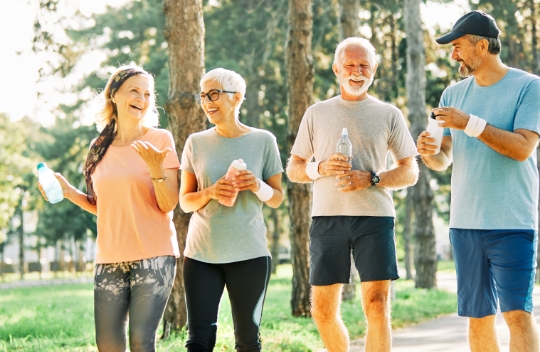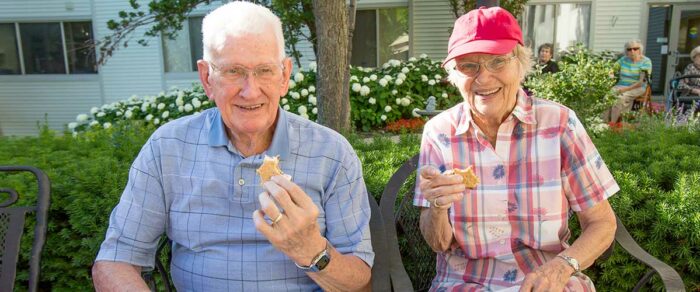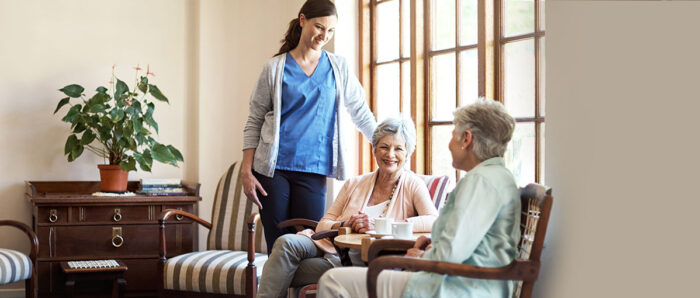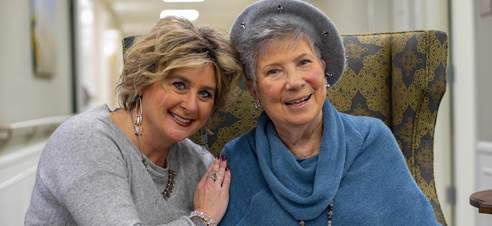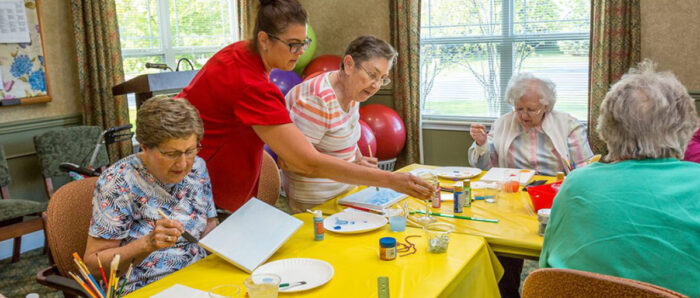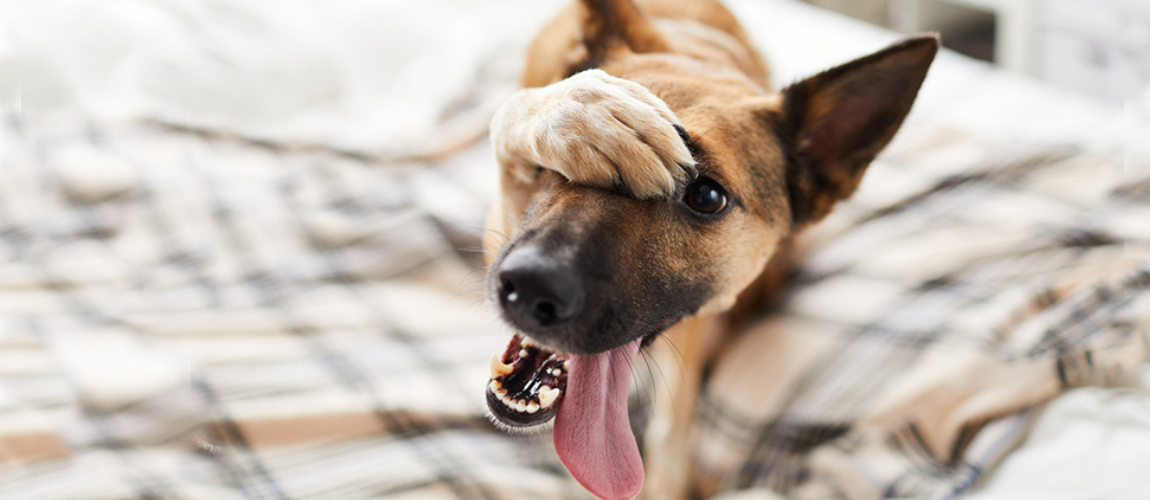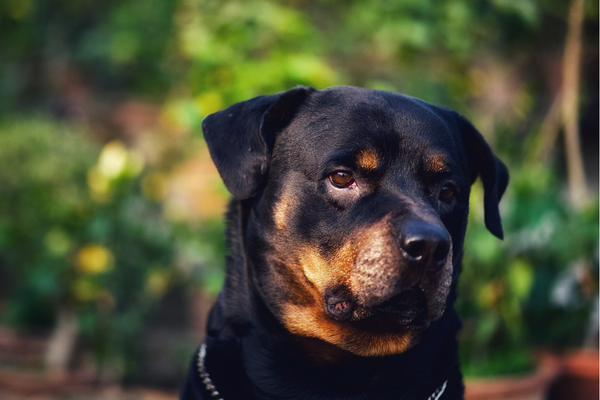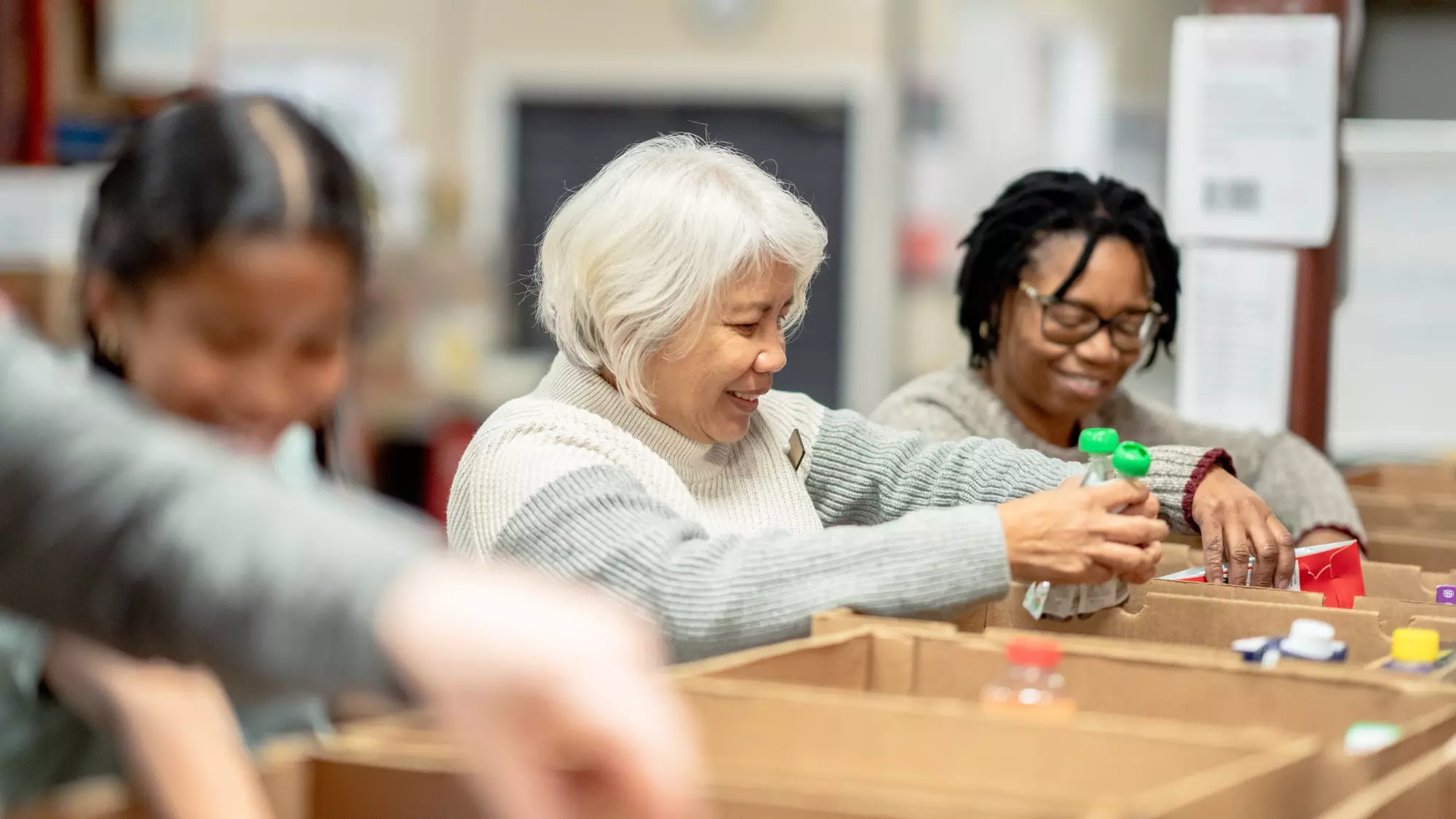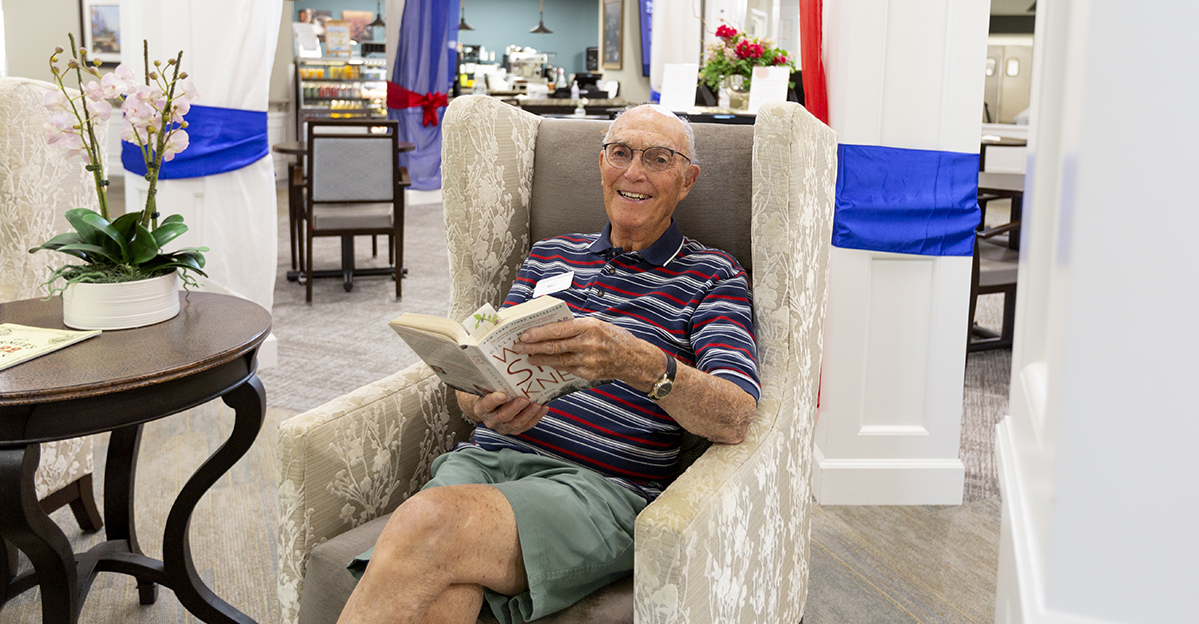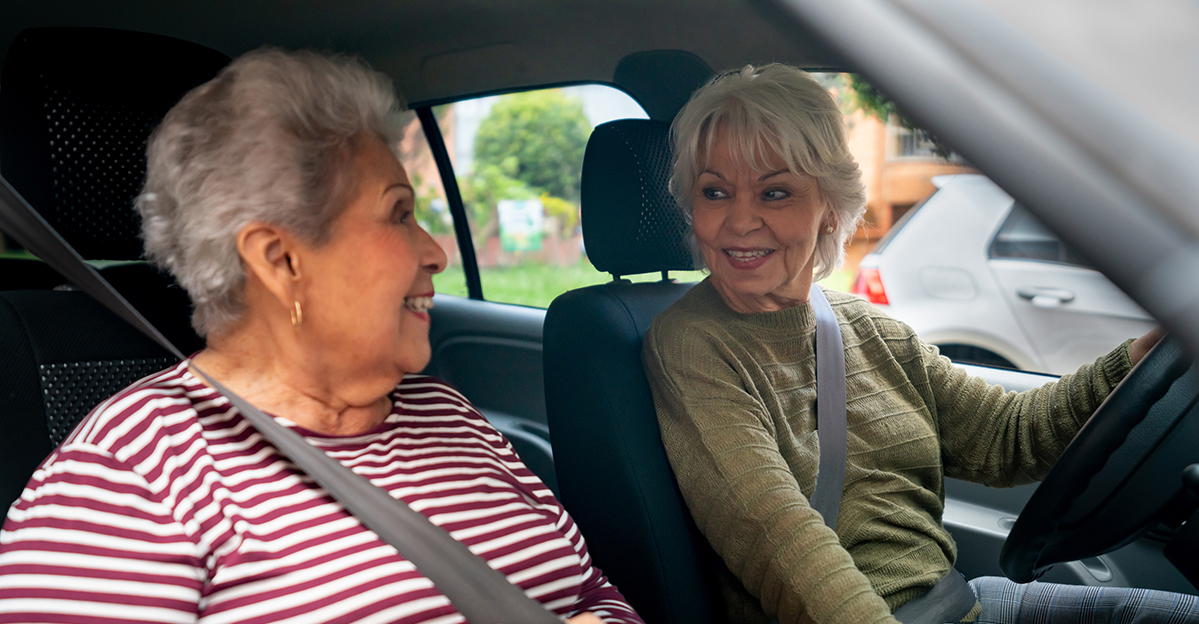For seniors seeking companionship, dogs are an option to consider. Having a pet provides friendship, happiness and health benefits. Keeping up with your pup will help you stay active while having fun with your new friend. This increase in exercise can boost both physical and mental health. However, choosing the right dog breed is a must in order to receive the pros of pet ownership rather than the cons.
To ensure the best experience, find a dog that is suitable for seniors. Different dog breeds have different needs, routines and personality types. Finding an alignment in lifestyle between you and a potential dog is very important. We’ve listed the worst dog breeds for seniors based on characteristics including grooming frequency, exercise and ease of training.
Worst Dog Breeds For Seniors Comparison Chart
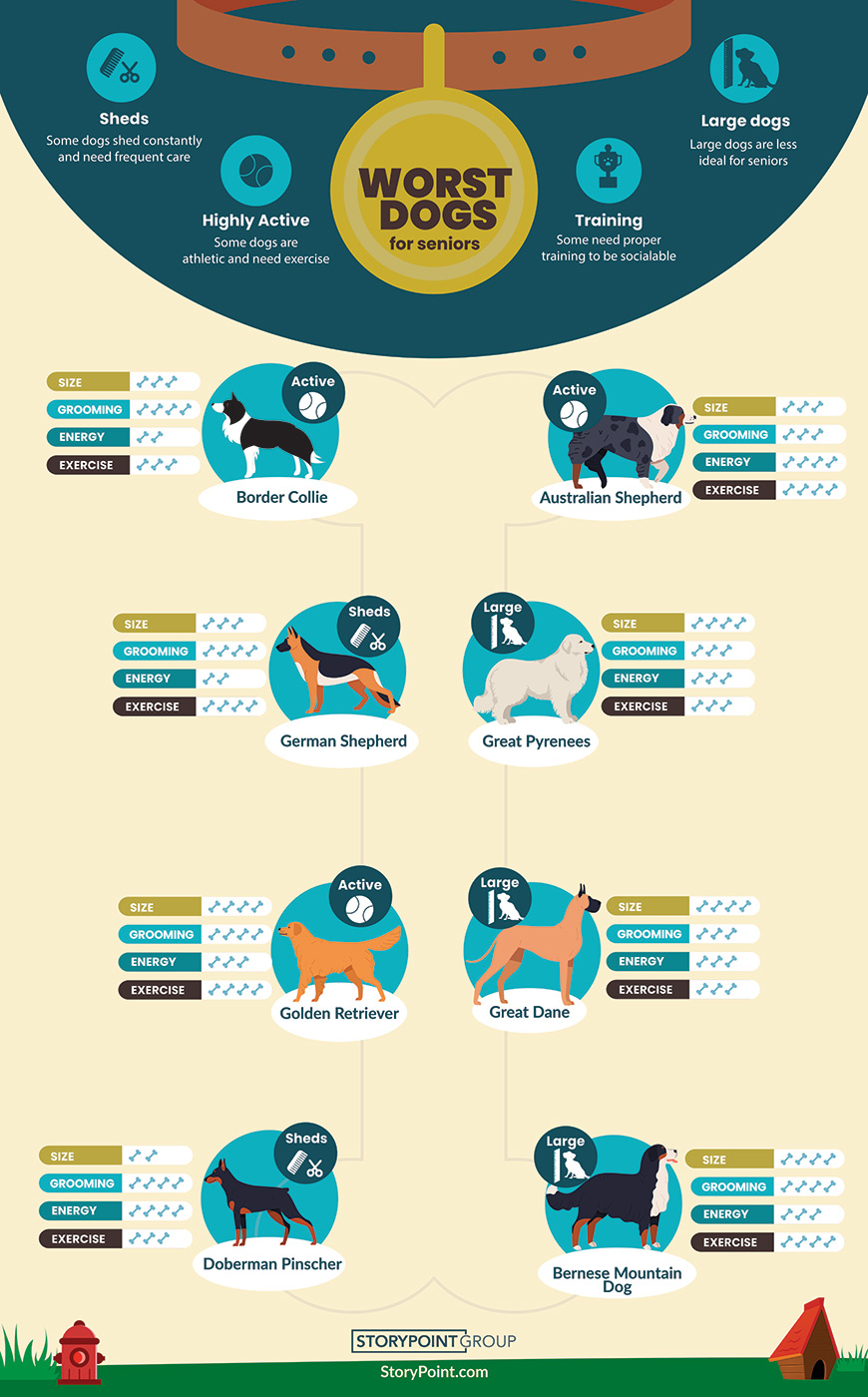
1. Australian Shepherd
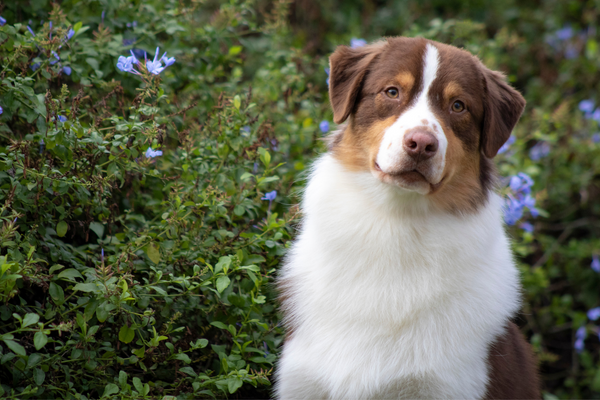
As a herding dog, Australian Shepherds are very active. They thrive on having routine and responsibility. Tasks keep them busy throughout the day as they are not the type to sit around and cuddle on the couch. Here are the habits to know before owning an Australian Shepherd.
Grooming
This breed has a beautiful coat that comes in unique colors and patterns. To avoid matting and loose hair, they should be brushed at least once a week. Unfortunately, their hair will shed and owners should be prepared for two periods throughout the year of heavy shedding. As a senior, this may affect respiratory health. To keep your environment clean, consider a dog with minimal shedding.
Exercise
Australian Shepherds are extremely active. They require at least an hour a day of exercise and prefer to do so with their owner. This breed needs to be mentally stimulated and provided with a daily routine. Their ideal playtime can include:
- Walks
- Bike rides
- Runs
- Dynamic hikes
- Backyard games
- Canine sports
These activities represent the high activity level Australian Shepherds thrive on. This breed is ideal for active owners, families and homeowners with a yard to run and play in.
Training
Australian Shepherds are highly intelligent, which makes them easy to train. These dogs are looking to their owner to keep them stimulated and have something to do. This breed bonds quickly with their family and their loyalty makes them respond well to training. Without proper training and attention, an Australian Shepherd can become nervous and destructive. Providing these dogs with something to do throughout the day will keep them busy to channel their energy.
Personality
This breed is full of energy. The high energy makes them extremely active, wanting to conquer many activities with their owner. Whether it’s hiking, biking or backyard games, the Australian Shepherd is ready for anything. Bonding with their owner will develop strong loyalty, which is another personality trait of this breed. They make joyful companions for active owners.
2. Border Collie
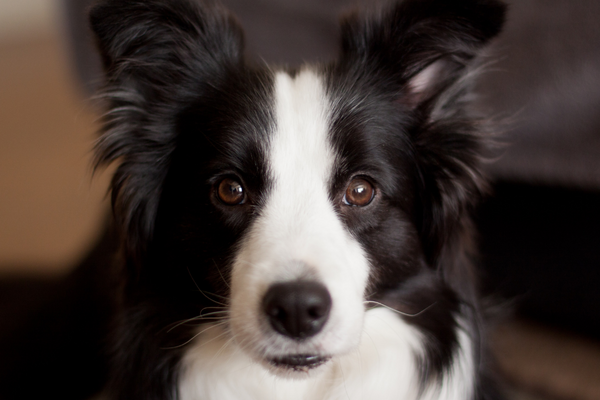
Another herding breed is the Border Collie. These dogs are active and on a mission to stay busy. This breed is considered a workaholic and needs constant activity or responsibility. With their inherent herding instinct, they will try to herd other animals. Consequently, this breed needs an active owner or a setting with other animals. Other tendencies of the Border Collie that are important to consider include grooming, exercise, training and personality.
Grooming
Despite the two variations of Border Collie coats, the grooming is the same. Both require brushing twice a week to prevent matting and tangling as well as any lingering dirt or debris. The requirements for grooming this breed are minimal and easier for owners who may not have time for frequent visits to the groomer. Haircuts are only needed every three months.
Exercise
Border Collies are very energetic and require daily exercise. To burn off their high energy levels, a minimum of two hours of exercise daily is recommended. While walks are good, this breed wants a little more challenge. The activities they’re looking for include:
- Herding events
- Agility competitions
- Obedience practice
- Playing fetch
- Flying disc
- Sports
These examples show off the athleticism of the Border Collie breed. Owners of these dogs should be active and able to keep up with these energetic canines. Long daily walks and hours of playtime are needed to keep this breed from getting bored. Without the proper exercise, Border Collies can become mischievous when there is nothing else to do.
Training
When training a Border Collie, it’s important to socialize them earlier with other people or other dogs. This can be challenging for seniors who are unable to take them to social environments or outings. These dogs are highly intelligent making them easily trainable. They excel in obedience, herding and agility activities.
Personality
The Border Collie’s instinct to herd animals and people makes them a bad fit for households with young children. The ideal owners are active and if they have children, they should be older and well-behaved. These high energy dogs are loyal, playful, intelligent and active. They thrive in the outdoors and love to be part of the action.
Related: The Pets Of StoryPoint: More Fur-Ever Friends!
3. Golden Retriever
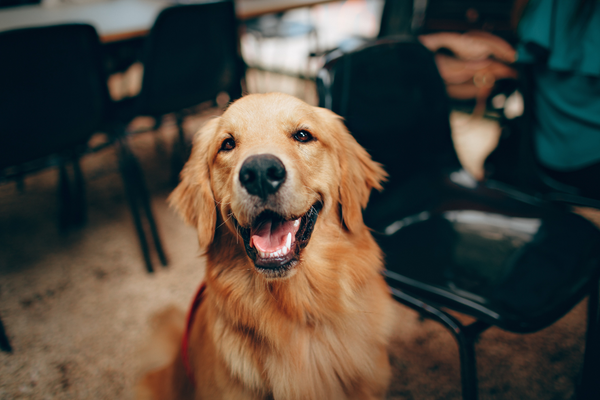
One of the most popular dog breeds in America is the Golden Retriever. Due to its popularity, it might be tempting to consider this friendly and intelligent companion. However, due to the necessary activity levels of this breed, it is not ideal for seniors.
Grooming
Every 8-10 weeks, Golden Retrievers will require grooming. Most of the time, only a trim is needed on their ears, feet, neck and tail. Their golden coat needs to be brushed every one or two weeks to prevent mats and excess shedding. This breed will shed frequently, especially during periods of heavy shedding.
Exercise
Golden Retrievers crave physical activity and need at least two hours of exercise a day. These dogs are a sporting breed and will want to play with their owner as much as possible. Adventures they hope to be a part of include:
- Long runs
- Bike rides
- Hunting trips
- Field trials
- Canine sports
Owners of Golden Retrievers should have aligned interests before choosing this breed. These dogs make great companions, but mainly for owners who are very active and able to run around with them, as well as take them on outings.
Training
Golden Retrievers are outgoing, loyal, and eager to do your bidding, making them a great candidate for training. They are easy to train but easily bored. Golden Retrievers require a great deal of mental stimulation to avoid becoming frustrated. Born to retrieve, high activity training is a great way to get them to be diligent sidekicks. Left untrained Golden Retrievers may carry around things they shouldn’t, making you end up with misplaced socks and more.
Personality
These dogs are very outgoing and friendly. They are eager to meet new people and please their owner, which demonstrates their loyalty. This breed is great for families since they are good around other people and animals. They are both calm and affectionate making them a great addition for an adventurous family that enjoys being active.
4. Doberman Pinscher
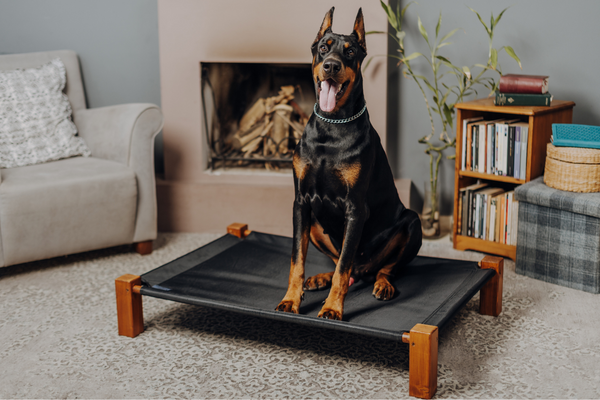
Doberman Pinschers are a powerful breed that is often used as a guard dog. Their muscular build and strength makes them less than ideal for seniors. Owners must be able to have control over their dog and with a stronger breed, there is a chance they may have more power than some seniors. Other traits displayed by Dobermans may also make them hard to keep up with.
Grooming
Brushing their pristine coat should be part of their daily routine. A short bristled brush can promote shine and keep their coat healthy. Overall, grooming needs for these dogs are minimal. Like other breeds, their nails will need to be cut often and teeth brushed regularly. Unique to Dobermans, ear cleaning is required in their grooming routine every few days.
Exercise
Due to their large size and high energy levels, two hours of daily exercise is required. It takes a lot for this breed to get tired so they need a rigorous exercise routine for all their pent-up energy. Doberman owners need to be highly active in order to keep up with them. This breed wants to run around and play for hours and their owners should be able to keep up. Runners are an ideal owner for Doberman Pinschers because this breed has the energy and stamina to keep up with them.
Training
If Dobermans are not raised properly, they can become unmanageable. Due to their strength, it’s crucial that they are trained correctly so the owner has full control over this strong animal. Luckily, they are very intelligent and quick learners. This makes training easy and allows owners to have control over their Doberman Pinscher.
Personality
This breed makes a loving and fun companion. With the proper training, they are great pets. They have a side to them that can be pushy and destructive which is why these are one of the worst dogs for seniors. Seniors may not have the ability or space to properly train this dog which is key to being able to manage them.
Related: The Pets Of StoryPoint
5. German Shepherd
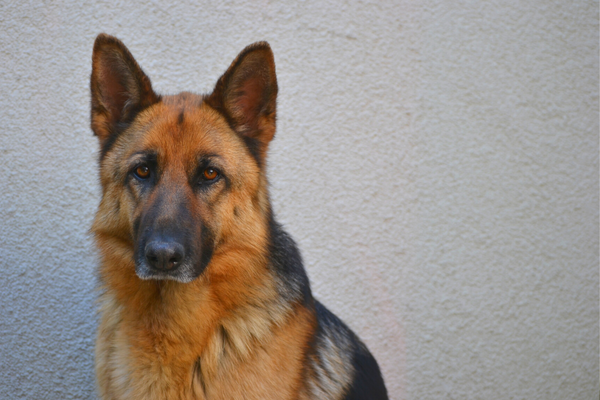
German Shepherds are intelligent dogs with extreme loyalty. They are all purpose workers that can take on multiple tasks at once. This breed is courageous, confident, gentle and loving. These traits make great guardians and family dogs. However, other aspects of a German Shepherd make them a bad fit for seniors.
Grooming
One of the main reasons German Shepherds are one of the worst dogs for seniors is due to their shedding. They constantly shed all year round and it requires daily cleaning to keep your space free of hair. Pet hair carries dander that may spread dust mites, pollen, mold and more. Brushing can help lessen the shedding, but it can be challenging to keep up with the extra cleaning.
Exercise
This active breed requires exercising for a minimum of two hours daily. These dogs are athletic in nature and want to keep active beyond one daily walk. As a herding dog, they need tasks to keep them busy. This allows for both mental and physical stimulation that German Shepherds crave. Tasks can include:
- Going for a run
- Agility drills
- Hiking
- Playing with other dogs
Daily walks are a great way to start out with a German Shepherd puppy but with age, they will need more activity to keep them stimulated.
Training
Similar to most breeds, early socialization is important to familiarize your pup to other dogs and people. While they are young, classes are helpful, as well as ongoing obedience training. German Shepherds are highly intelligent, calm and hard workers making them ideal for high-pressure situations including police and military duties.
Personality
German Shepherds may come off as tough due to their size and reputation. However, this breed is also gentle and loving when they aren’t hard at work. They love to play around and be active which is why the ideal owner for this breed is active and experienced pet owners.
6. Bernese Mountain Dog
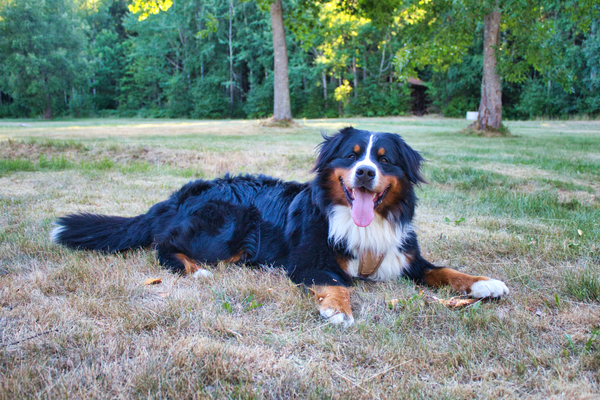
Bernese Mountain Dogs are a large breed that is ready to work. However, it’s their large size and herding attitude that makes them a bad choice for seniors. Without something to do they can become mischievous. They have the ability to multitask and thrive in cold weather given their history of working on farms in Switzerland. They specialize in herding cattle, pulling carts and being watchdogs. But their size and other traits make them one of the worst dogs for seniors.
Grooming
This breed has a high-maintenance grooming ritual. Shedding is often but heavy at two periods during the year. To minimize shedding, frequent brushing is recommended along with nail trimming and bathing. This makes it difficult for some seniors to handle their excessive shedding and grooming routine. For their coat, the best tool to use for tangles include a slicker brush or metal comb.
Exercise
This breed loves outdoor activities and makes great companions for going on walks or hikes. These dogs aren’t as active as others on this list and only require a half hour of exercise each day. This makes it easier for less active owners to own a Bernese Mountain Dog. Mental exercises are also important for this breed. Some examples include:
- Learning tricks
- Chew toys
- Puzzle games
- Testing scents
- Working for their food
Training
These dogs are sensitive and won’t respond well to harsh criticism. During training, make sure to use the proper reinforcement methods to motivate your pup. Overall, they are eager to please their owner so training is relatively easy. Early socialization and obedience training are required for this breed, which can be hard for seniors to take on.
Personality
These dogs are big, but so are their hearts. This breed is very affectionate and wants to make their owner happy. Due to their loyalty and attachment, they do not like being left alone for long. The ideal owner for a Bernese Mountain Dog is someone who is home often and able to handle a dog of this size and provide the proper training to keep them happy.
7. Great Pyrenees
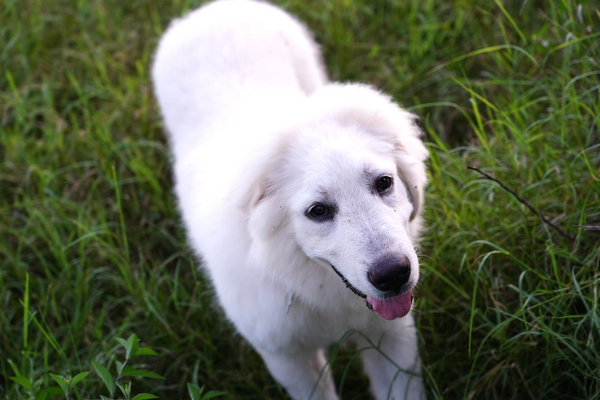
Great Pyrenees are big in size, but extremely affectionate. These dogs are fun and friendly but also independent and hardworking. Great Pyrenees are bred to protect livestock on farms and can often be seen in barns across the world. They enjoy having jobs, such as herding or protecting cattle. Their size and strength makes them less than ideal for seniors.
Grooming
Great Pyrenees is another breed of mountain dog with a thick, fluffy, white coat. This breed doesn’t require much grooming outside of regular trimmings and bathing. Although their hair doesn’t require much work, they do shed quite a bit. Prepare for white hairs to be all around your clothes and home. Shedding is not ideal for seniors which makes the Great Pyrenees one of the worst dogs for seniors.
Exercise
Great Pyrenees don’t require much exercise. They still should be walked often to keep them healthy, but they won’t become destructive like other breeds. While they may not need a lot of physical activity, this breed seeks mental challenges. These can include playing with toys, learning new tricks, obedience trials and more.
Training
Due to their independence, they may not enjoy the average training session. Sit, stay and heel will do nothing for them and they may even get bored. Early socialization and obedience is still necessary for this breed, but they won’t require as much training as other breeds.
Personality
This dog is very calm in nature. Although they are big, their actions are very gentle and well-mannered. This makes them great family dogs as they closely bond with family members and become very devoted to them. While their sweetness makes them approachable to seniors, their size and strength can cause potential risks that can make this breed dangerous for seniors.
8. Beagle
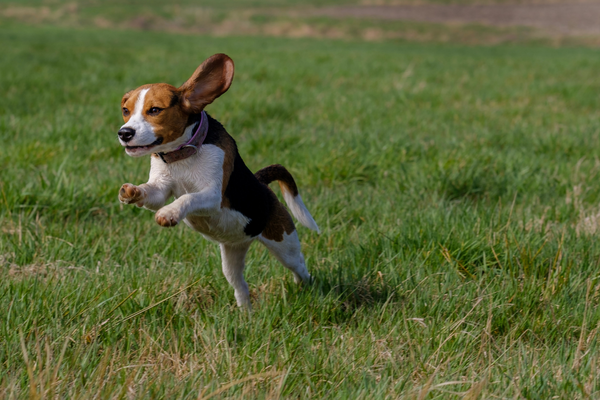
These small dogs are carefree companions. They are hunting dogs and have many specialties. Beagles are fun loving and happy which makes them easy to be around family. However, these dogs are very vocal which makes them one of the worst dogs for seniors. The loud noise can be irritating, especially with sensitive ears. Also, they could annoy surrounding neighbors in close quarters such as an apartment complex or senior living community.
Grooming
Beagles don’t need to be bathed often and grooming is manageable. Weekly brushing will help remove loose hair while also promoting new hair growth. This breed doesn’t shed as much as others, but will still require some cleaning to keep your surroundings fresh.
Exercise
Beagles thrive in packs and seek companionship. Having a second dog is ideal for a Beagle owner. Regular meetups with other dogs will also keep them happy. These dogs are energetic and active, requiring at least one hour of exercise a day.
Training
When training Beagles, treats are a must. While they do help most dogs, Beagles work best with positive reinforcement and a little patience. Like other breeds, early socialization and puppy classes will benefit your dog in the long run.
Personality
Beagles have a comedic side to them and they can bring joy to the right owner. They are cheerful, loving and loyal companions. This breed is also energetic and active so it’s important owners have an aligning lifestyle.
9. Rottweiler
Rottweilers are large dogs with plenty of muscle. This strong breed has the instinct to be protective of their family and devotes themselves to their owners. These are hardworking dogs, but they are gentle and soft around their loved ones. Due to their size and strength, this breed is not ideal for seniors. Other things to consider include grooming, exercise, training and personality.
Grooming
The grooming needs for Rottweilers are fairly simple. Weekly brushing is required along with the usual nail trimming, bathing and teeth brushing. These dogs have a short, sleek coat making shedding minimal compared to others, except for two heavy shedding periods a year.
Exercise
This athletic breed requires exercise on a daily basis. Due to their hardworking nature, they excel in performing jobs that they are given. This is a good way to keep the dog active while also giving them mental stimulation. These dogs love walking, swimming and spending time with their family. An ideal owner for this dog has an active family that is prepared to properly train their Rottweiler.
Training
Early development is a crucial time for training a Rottweiler. This breed is highly intelligent making them fairly trainable, especially since they aim to please their owners. Early training sessions that can help include:
- Leadership
- Puppy socialization
- Basic training
- Canine sports
This breed can be stubborn during training. They will respond to firm discipline but it should not be aggressive which can promote roughness and can influence bad behavior later in life.
Personality
These confident dogs are committed to protecting their family. They love to play with their owners and are extremely affectionate around them. However, they have the ability to be aggressive and dominant when it comes to protecting them. Although the aggression isn’t towards their owners, it’s best for seniors to avoid this breed to be safe.
10. Great Dane
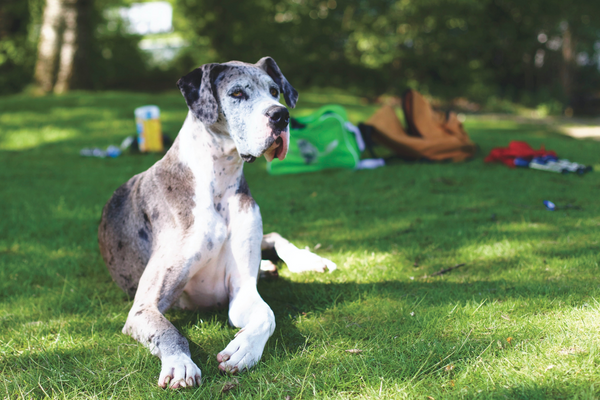
Great Danes are known for their extreme size. These hunting dogs are easy going and great to live with, but aren’t ideal for a senior. Being responsible for a large animal that is stronger than you is a lot of work. Other elements of pet ownership that require a lot of work include grooming, exercise, training and personality.
Grooming
This breed doesn’t shed often. Although their coat is short, weekly brushing is still recommended. This low maintenance dog is ideal for owners who can’t make frequent trips to the groomer or spend hours brushing hair and cleaning up after shedding.
Exercise
Two hours of exercise daily is required for Great Danes. Certain smells may cause them to wander off and it’s important that they remain on a leash. Multiple walks a day are the best way to exercise a Great Dane.
Training
Obedience training is required for a dog this large. Making sure they are well trained can keep them in line and under control. Standard training will also benefit a Great Dane. They love socializing and pleasing their owners so training sessions are an effective method to keep them entertained.
Personality
Great Danes are often referred to as gentle giants. They are affectionate, playful and sweet. This makes them excellent family dogs when trained properly. Owners of Great Danes should be strong and able to manage their large presence. These dogs can be destructive but respond well to firm, correction reinforcement.
Finding The Fit For You
When choosing a dog, it’s important to research the habits that come along with each breed. Understanding high activity levels or shedding patterns can determine which dogs should be avoided. It’s important to do your research on what breeds best fit your lifestyle and talk to breeders about a dog’s traits and temperament.
Related: The Best Dogs For Seniors
Companionship In Senior Living
Our communities provide a welcoming environment for both you, your dog or even your cat! Our various locations offer pet-friendly options because we understand the importance of companionship. Residents and their pets can bond together in our communities and make new friends. We welcome your fur-ever friends. Howl does it get any better than that?
Speak to a Community Specialist today to learn about a community near you, give us a call at 1-844-275-9990.


